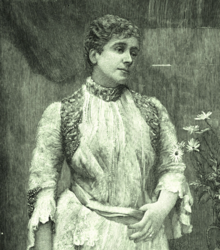The Woman's Christian Temperance Union (WCTU) is an international temperance organization. It was among the first organizations of women devoted to social reform with a program that "linked the religious and the secular through concerted and far-reaching reform strategies based on applied Christianity." It plays an influential role in the temperance movement. Originating among women in the United States Prohibition movement, the organization supported the 18th Amendment and was also influential in social reform issues that came to prominence in the progressive era.

Frances Elizabeth Caroline Willard was an American educator, temperance reformer, and women's suffragist. Willard became the national president of Woman's Christian Temperance Union (WCTU) in 1879 and remained president until her death in 1898. Her influence continued in the next decades, as the Eighteenth and Nineteenth Amendments to the United States Constitution were adopted. Willard developed the slogan "Do Everything" for the WCTU and encouraged members to engage in a broad array of social reforms by lobbying, petitioning, preaching, publishing, and education. During her lifetime, Willard succeeded in raising the age of consent in many states as well as passing labor reforms including the eight-hour work day. Her vision also encompassed prison reform, scientific temperance instruction, Christian socialism, and the global expansion of women's rights.

Lillian M. N. Stevens (1843–1914) was an American temperance worker and social reformer, born at Dover, Maine. She helped launch the Maine chapter of the Woman's Christian Temperance Union (W.C.T.U.), served as its president, and was elected president of the National W.C.T.U. after the death of Frances Willard. Stevens also served as Editor-in-chief of the W.C.T.U.'s organ, The Union Signal.
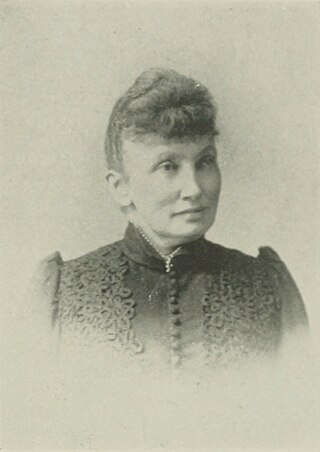
Matilda B. Carse was an Irish-born American businesswoman, social reformer, publisher, and leader of the temperance movement. With Frances E. Willard and Lady Henry Somerset, Carse helped to found the Woman's Christian Temperance Union (WCTU).
The Woman's Temperance Publishing Association (WTPA) was a non-commercial publisher of temperance literature. Established in 1879 in Indianapolis, Indiana during the national convention of the Woman's Christian Temperance Union (WCTU), it was a concept of Matilda Carse, an Irish-born American businesswoman, social reformer and leader of the temperance movement.

Esther Pugh was an American temperance reformer of the long nineteenth century. She served as Treasurer of the National Woman's Christian Temperance Union (WCTU), a Trustee of Earlham College, as well as editor and publisher of the monthly temperance journal, Our Union.

Mary G. Charlton Edholm was an American reformer and journalist. She worked as a journalist for twenty years.

Mary Allen West was an American journalist, editor, educator, philanthropist, superintendent of schools, and temperance worker. A teacher in her early career, she served as superintendent of schools in Knox County, Illinois, being one of the first women to fill such a position in Illinois. An active supporter of the temperance movement, West served as president of the Illinois Woman's Christian Temperance Union (WCTU), and editor of the national paper, Union Signal. Her other roles within the WCTU included superintendent of the Training School for Temperance Workers, Illinois State Superintendent of Temperance in Schools of Higher Education, as well as Stockholder, Director, and Secretary of the Woman's Publication Association. She was the first president of the Illinois Woman's Press Association, member of the Chicago Woman's Club, director of the Protective Agency for Women and Children. West was the author of Childhood: Its Care and Culture (1887). She died in Japan, in 1892, while training temperance workers in organization and promotion reform efforts.

Caroline Brown Buell was an American activist who lectured and wrote on behalf of temperance and suffrage. She served as the assistant recording secretary (1878–80), corresponding secretary (1880–93), and a member of the Our Union publication committee (1876–83) of the National Woman's Christian Temperance Union (WCTU); as well as the president (1904) and corresponding secretary (1875–86) of the Connecticut WCTU. She also originated the plan of the Loyal Temperance Legion, the children's society of the WCTU. Buell wrote extensively for temperance publications, and other papers and magazines. She made her home in East Hampton, Connecticut.

Frances Julia Barnes was an American temperance reformer. She served as General Secretary of the Young Woman's Branch of the Woman's Christian Temperance Union (WCTU).

Eva Kinney Griffith Miller was an American journalist, temperance activist, novelist, newspaper editor, and journal publisher.

Julia Colman was an American temperance educator, activist, editor and writer of the long nineteenth century. She served as superintendent of literature in the Woman's Christian Temperance Union (WCTU).
Margaret E. Winslow (1836-1936) was an American activist, newspaper editor, and author of several temperance books. She served at two separate times, and during the longest period of any editor-in-chief of Our Union, the national organ of the Woman's Christian Temperance Union (WCTU). It was a burst of inspiration from Winslow, relative to its simplicity and purity, which at the National WCTU Convention in Chicago determined the union to wear the white ribbon as a badge rather than the red, white, and blue which was strongly urged by many.

The Union Signal is a defunct American newspaper. It was the organ of the National Woman's Christian Temperance Union (N.W.C.T.U.), at one time, the largest women's organization in the United States. Established in 1874 aa The Woman's Temperance Union, it was renamed in 1877 as Our Union. When Our Union merged with another temperance paper, The Signal, in 1883, the organ's name was changed to The Union Signal. Published in Chicago, Illinois, it focused on the woman's temperance movement in the U.S. Initially, a weekly 16-page illustrated newspaper, it shifted location and publishing schedule before it ceased publication in 2016. The last edition of the N.W.C.T.U.'s quarterly journal, titled The Union Signal, was published in 2015, the main focus of which was current research and information on drugs.
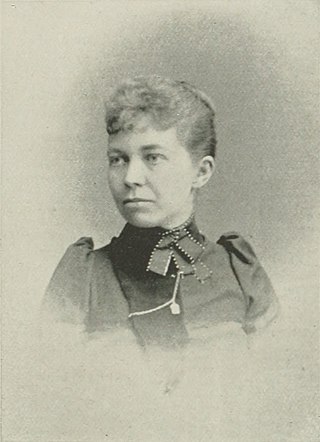
Alice Capitola Willard was an American journalist and businesswoman. She served as editor of the Times, manager of the Woman's Signal (London), and managing editor of Woman's Signal Budget (London).

Mary Osburn Adkinson was an American social reformer active in the temperance movement. She took a leading part in the organization of the Woman's Foreign Missionary Society of the Methodist Episcopal Church in Madison, Wisconsin, serving four times as its elected president. In Louisiana, she held the position of superintendent of the Woman's Christian Temperance Union (WCTU) and matron in the New Orleans University.

Lucia H. Faxon Additon was an American writer, music teacher, and Woman's Christian Temperance Union (WCTU) official. In addition to being a pioneer in WCTU work on the Pacific Coast, she was known as a leader in philanthropic, education, and religious work. Additon was also a clubwoman, being the founder and president of the Woman's Press Club of Oregon, and State chair of Industrial Relations in the Oregon Federation of Woman's Clubs.

Temperance Temple served as the headquarters of the National Woman's Christian Temperance Union (WCTU). It was located in Chicago, Illinois at the southwest corner of LaSalle Street and Monroe Street, in the center of city's financial district. Work was begun in July, 1890, and the building was ready for occupancy in May 1892. The lot was valued at US$1,000,000; the rentals from the building were expected to bring in an annual income of over US$200,000. The capital stock was US$600,000, one-half of which was owned by the Temple Building Association of Chicago (TBAC), and it was expected all would be secured to that association. The TBAC, a stock company with Marshall Field president of the board of trustees, owned The Temple, the third of the affiliated interests of the National WCTU. The office building was erected at a cost of US$1,200,000 on ground leased to the TBAC by Field. Temperance Temple was demolished in 1926.
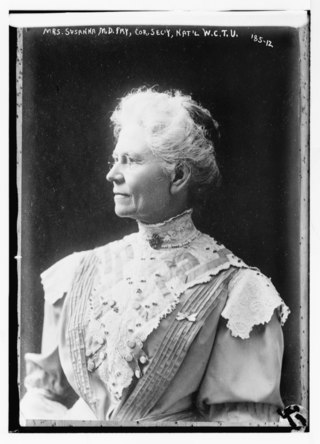
Susanna M. D. Fry was an American educator and temperance worker. Her teaching career began in the primary department of the village school, but her superior ability as a teacher led her swiftly into positions of greater responsibility. Fry was a professor who held the chair of English literature at Illinois Wesleyan University, Bloomington, Illinois and at the University of Minnesota. She served as president of the Minnesota Woman's Christian Temperance Union (W.C.T.U.), and managing editor of The Union Signal, the organ of the National W.C.T.U. During her career as a professor and as an official of the W.C.T.U., Fry was a frequent speaker in Prohibition campaigns and at temperance conventions. Fry was the only woman chosen from the Methodist church to speak before the Parliament of the World's Religions, 1893.
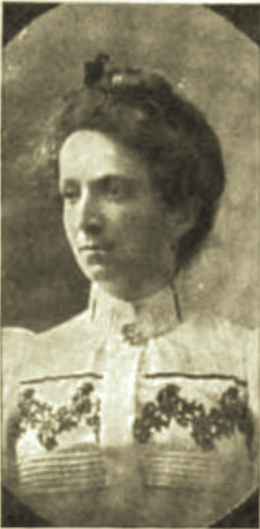
Jane Agnes Stewart was an American author, editor, and contributor to periodicals. She was a special writer for many journals on subjects related to woman's, religious, educational, sociological, and reform movements. Stewart was a suffragist and temperance activist. She traveled to London, Edinburgh, and Paris as a delegate of world's reform and religious conventions.
